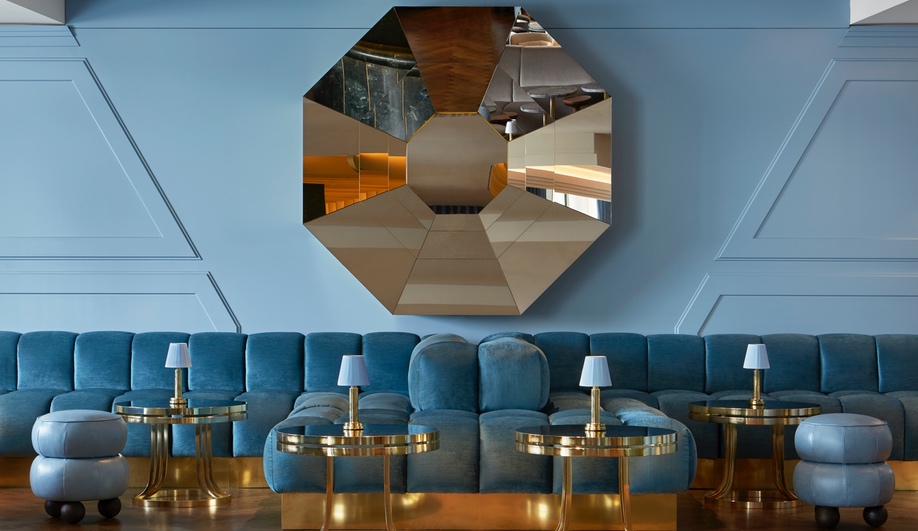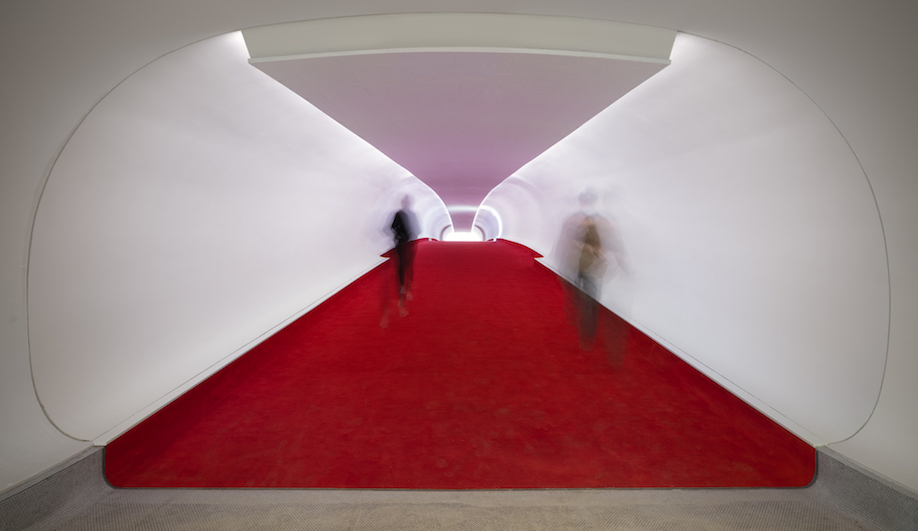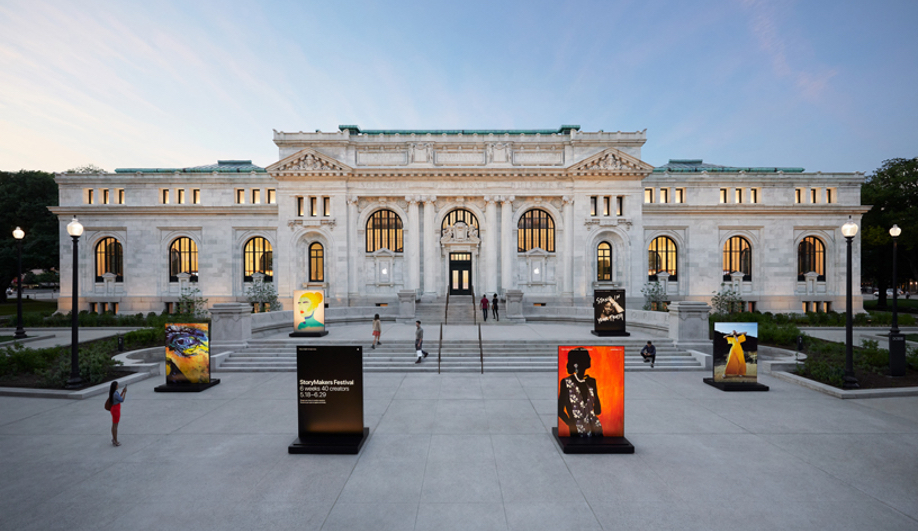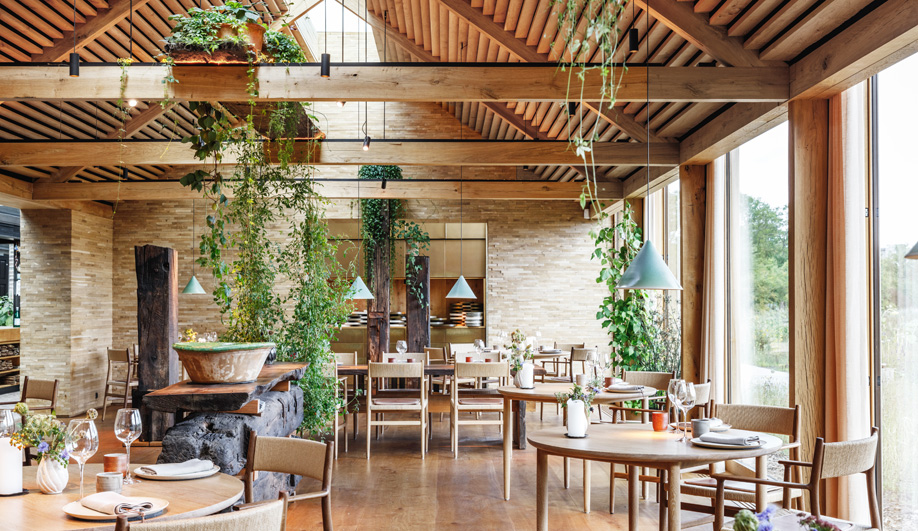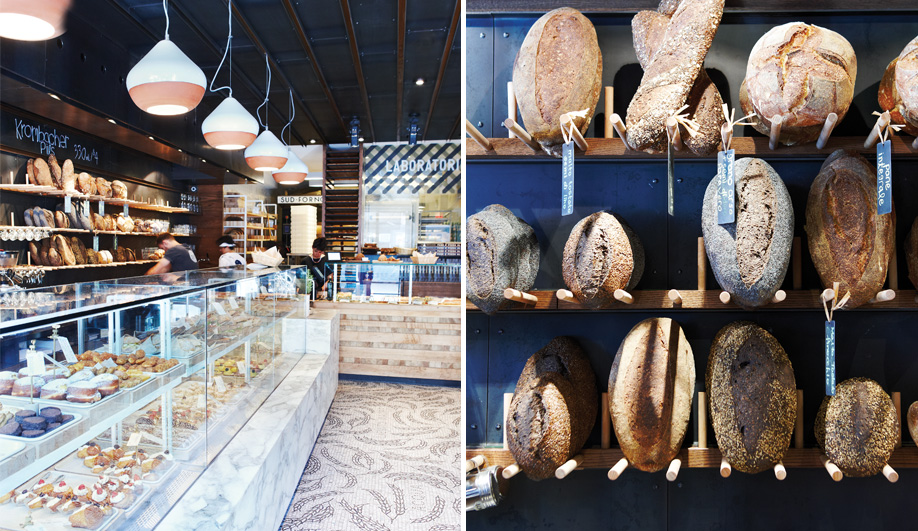
For the popular southern Italian eatery Terroni, Giannone Petricone creates a storefront that serves up a palette of wholesome textures.
In Toronto’s Queen West neighbourhood, one of the city’s hottest districts, it’s still difficult to get your hands on a fresh loaf of bread. Enter Sud Forno, a narrow, 230-square-metre bakery with a textured facade: toasted terracotta tile cladding in a herringbone pattern, streetside open windows framed in blackened steel, and an old school sign above the door. In the Mussolini-era font of old pasticcerie and classic Italian packaging, this graphic makes a clever nod to what’s inside.
Here, the whiff of industrial heritage gives way to warm sustenance. In creating a street-friendly retail space from a tight Victorian storefront, two doors down from the Terroni flagship – and one that serves as the forno (oven) for the chain’s restaurants – local architecture firm Giannone Petricone has delivered a cozy interior crafted with meticulous detail.

Left: Steel-framed windows open up onto the street, and rolled steel wall panels support shelving. Right: The pizza island, made of end-grain banded wood, fronts the kitchen, or laboratorio.
Beyond the entrance, Sud Forno’s walls are horizontally panelled in rolled steel. “We wanted it to feel like you are literally walking inside an oven, to get that psychic feeling we associate with bread, of warmth,” says principal Ralph Giannone. The panels’ C‑channelled grooves serve another, more practical function, holding up wooden shelves and rows of projecting red oak dowels upon which giant loaves of fresh bread rest. “They allow any excess flour to slip off onto the floor,” says Giannone’s partner, Pina Petricone, who recalls Sunday visits as a girl to her neighbourhood bakery, where the floor was liberally dusted with flour.
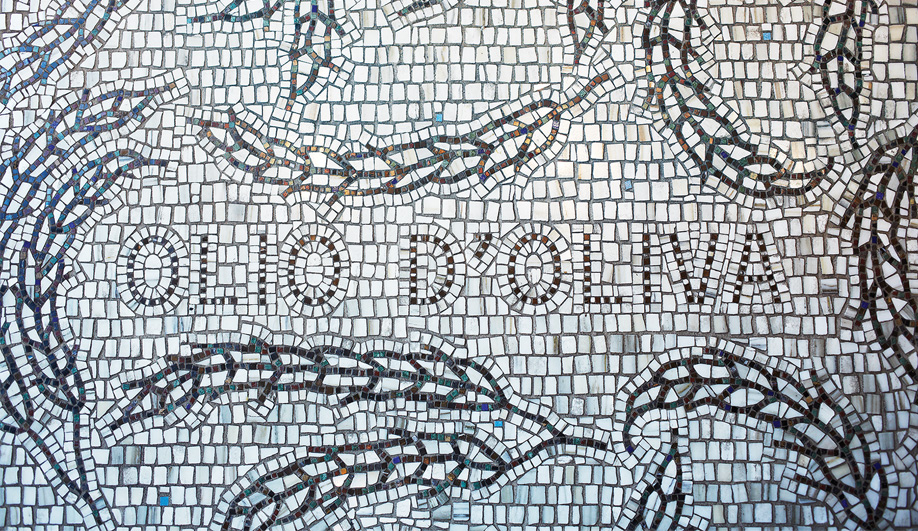
Handcrafted tesserae spell out Italian ingredients, such as olio d’oliva and farina 00.
For further inspiration, the firm drew on its relationship with the Terroni Group; it has conceptualized the interiors for the southern Italian eatery’s three main locations and three spinoffs (La Bettola, Bar Centrale and Osteria Ciceri e Tria) in Toronto, as well as two Los Angeles outposts. “We have a palette for Terroni: always real stone, ceramics, steel and wood,” says Giannone. “But this time we thought, let’s create a dark backdrop for the bread that has a real charred quality.”
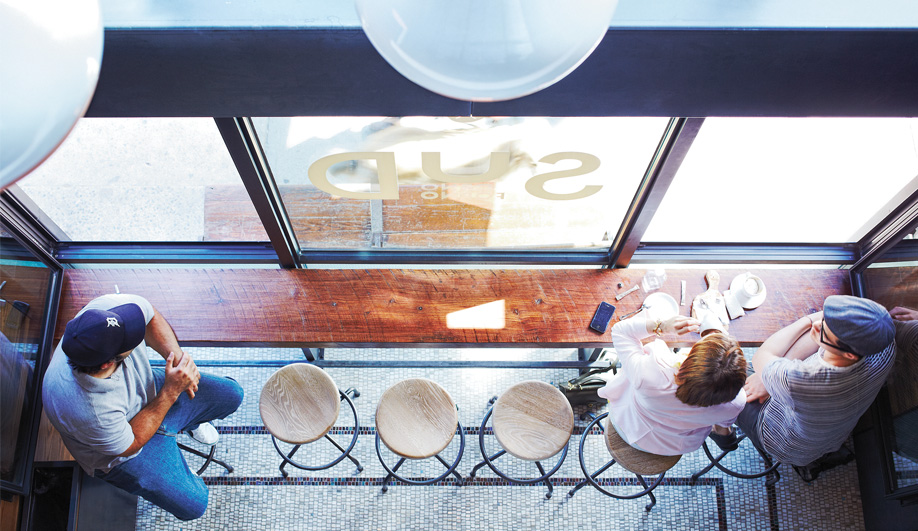
The view from the glass balustrade on the second floor down to the first level’s window seating.
The design tends toward a blend of modern and classic Italian finishes. This rhythmic mix of the spare with the earthily ornamental is rendered in surprising detail for such a tight floor space (the front of shop measures a mere 45 square metres). On the mosaic floor, designed by Andrew DiRosa, the brains behind all of Terroni’s graphics, and handcrafted by Igor Marziali for Ciot, the words acqua, farina, olio d’oliva – the key ingredients for the staff of life – are spelled out in tiny tiles.
In contrast, the Carrara marble and glass display case for sandwiches and pastries is a minimal block, warmed up by a row of teardrop pendant fixtures edged in half-baked clay. The cash, which sits at a lift-up counter of doily-like perforated Corten, abuts another island, constructed of end-grain banded wood that resembles a butcher’s block, for cutting and serving the pizza al taglio (by the slice). Steel stairs lead to a second-floor seating area with a vast communal table of Spanish cedar surrounded by industrial stools, from which you can view the bustling street beyond the double-height window wall framed in toasted oak. Peering down beyond the glass balustrade, you can spy the store’s window seating below.
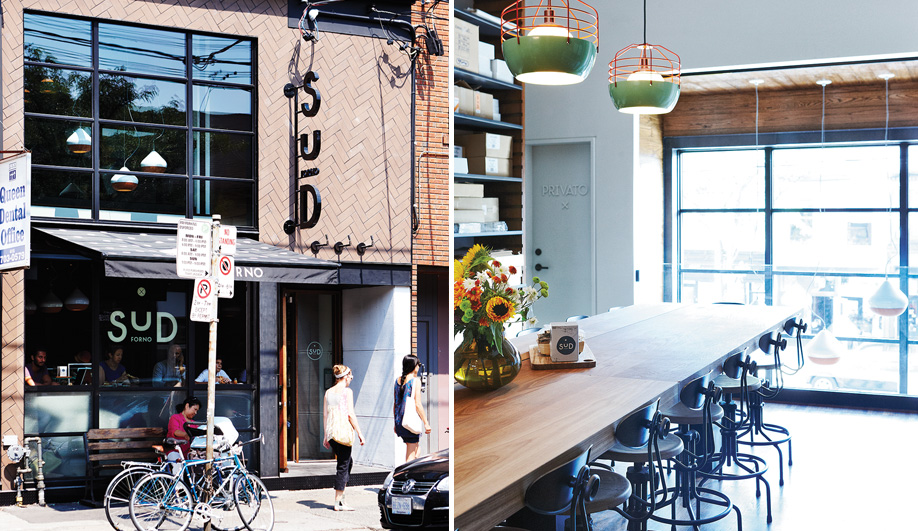
Left: Andrew di Rosa’s Sud Forno sign in blackened steel – along with the terracotta tile facade by manufacturer Sannani, sourced through Ciot – establish the variegated palette. Right: On the second floor, Jonah Takagi’s Bluffcity lights, by Roll & Hill, are suspended above a custom communal table furnished with stools from Toronto retailer Elte.
“It’s a subconscious thing we’re after,” says Giannone of the firm’s approach to retail interiors, which eschews attention-seeking design in favour of romancing the central concept. “You want people to feel it rather than see it” — certainly, in these authenticity-hungry times, a design idea worth sinking one’s teeth into.

